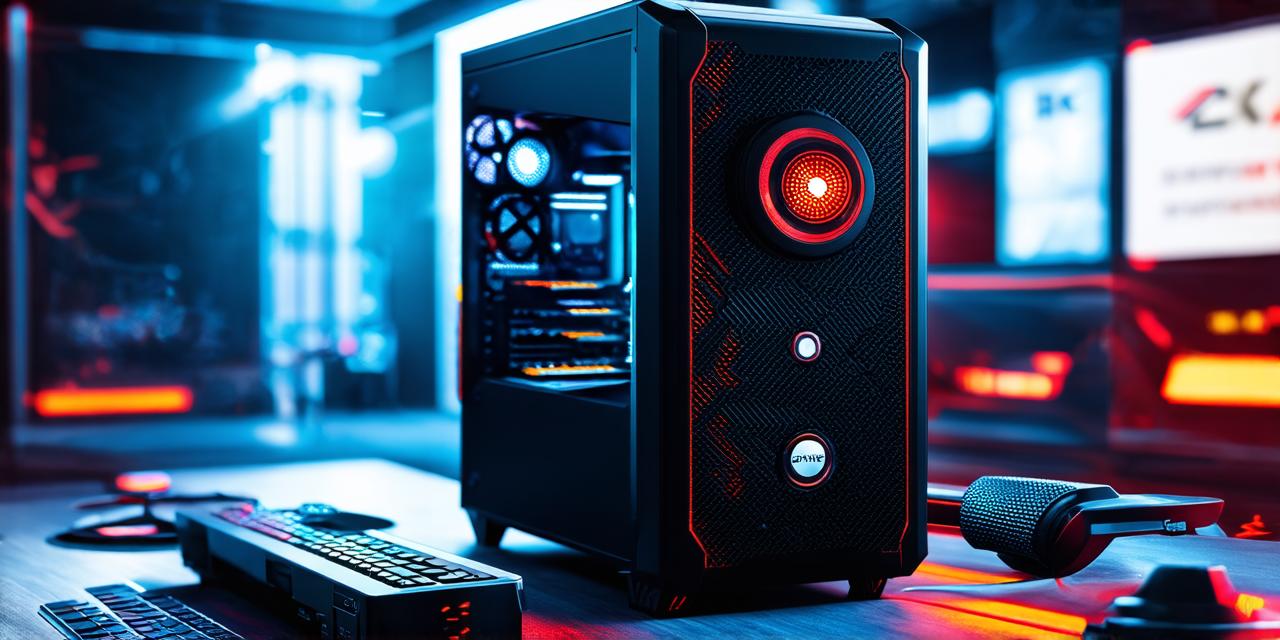Graphics Requirements
One of the most critical components of a VR system is the graphics card. The graphics card is responsible for rendering the virtual environment and displaying it on the screen. For VR development, you need a graphics card that supports DirectX 12 or higher, which is the industry-standard API for rendering 3D graphics.
The recommended graphics card for VR development is an NVIDIA GeForce RTX series card, such as the GTX 1080 Ti or RTX 2070 Super. These cards have dedicated hardware accelerators that are optimized for real-time ray tracing and can deliver stunning visuals with minimal latency.
If you are using an AMD GPU, the Radeon VII is a good option. This card has 16GB of HBM2 memory and supports DirectX 12, making it a great choice for VR development.
Processing Power Requirements
The processing power of your PC is another critical factor to consider when building a VR system. For VR development, you need a CPU with at least four cores and eight threads. This will ensure that the system can handle the demands of the virtual environment without any lag or stuttering.
Intel Core i7 processors such as the 9700K or 10700K are great options for VR development, as they have multiple cores and threads and support high clock speeds. AMD Ryzen 9 processors such as the 3900X or 5900X are also excellent choices, as they offer excellent performance and support for multi-threading.
Memory Requirements
Memory is another critical component of a VR system. For VR development, you need at least 16GB of RAM, with higher memory capacities being even better. This will ensure that the system can handle multiple applications running simultaneously without any issues.
The recommended RAM for VR development is DDR4 memory, as it offers faster speeds and higher capacity than DDR3 memory. You can find high-performance DDR4 memory modules from manufacturers such as Corsair, G.Skill, or Kingston.
Storage Requirements
Finally, the storage of your PC is another critical factor to consider when building a VR system. For VR development, you need at least 512GB of solid-state drive (SSD) storage, with higher capacities being even better. This will ensure that the system can load applications quickly and efficiently, without any delays or lag.
The recommended SSD for VR development is an M.2 form factor SSD, such as the Samsung 970 EVO Plus or Intel Optane Memory. These SSDs offer fast read and write speeds and can deliver excellent performance even with large files.
Case Studies and Personal Experiences
To illustrate the importance of optimal PC specifications for VR development, let’s take a look at some case studies and personal experiences.
Case Study 1: Oculus Quest 2 Development
In this case study, we will look at the development of the Oculus Quest 2, one of the most popular VR headsets on the market. The developers at Oculus faced several challenges when building the Quest 2, including limited processing power and memory. To overcome these challenges, they optimized the software for the hardware, ensuring that it ran smoothly even on lower-end systems.
Case Study 2: Unity VR Development
Unity is one of the most popular game engines used for VR development. In this case study, we will look at how Unity optimizes its software for different PC specifications. The developers at Unity use a technique called “targeting,” which allows them to create different builds of the engine that are optimized for different hardware configurations. This ensures that the engine runs smoothly on any system, regardless of its specifications.
Personal Experience: VR Development on a Laptop
I have recently started developing VR applications using Unity and an ASUS ROG Zephyrus G14 laptop. While the laptop has a powerful processor and graphics card, it only has 8GB of RAM and 512GB of SSD storage. This has caused some issues during development, as the system can sometimes lag or stutter when running multiple applications simultaneously. To overcome these issues, I have had to optimize my code for the hardware and use techniques such as level of detail (LOD) optimization to reduce the visual impact of distant objects.
